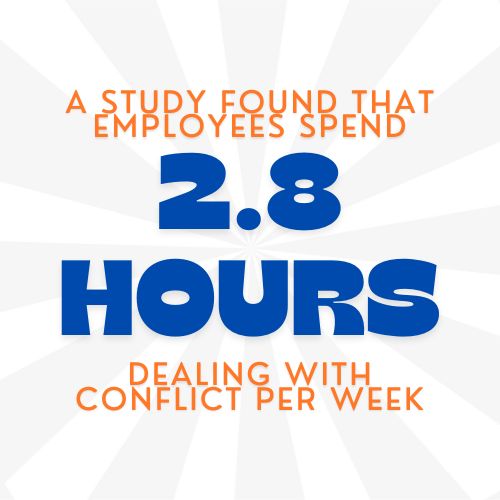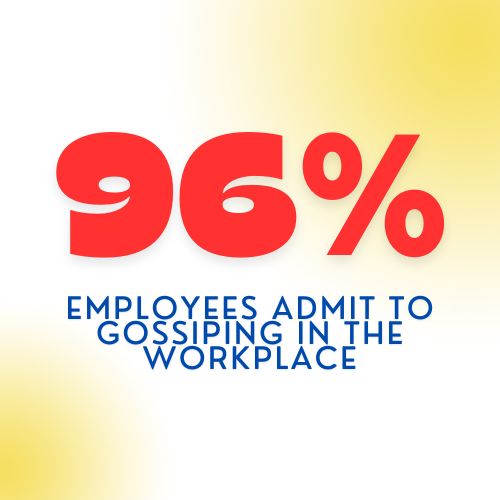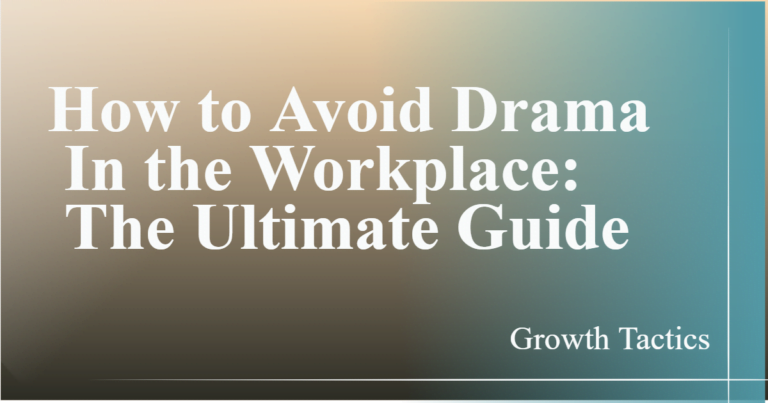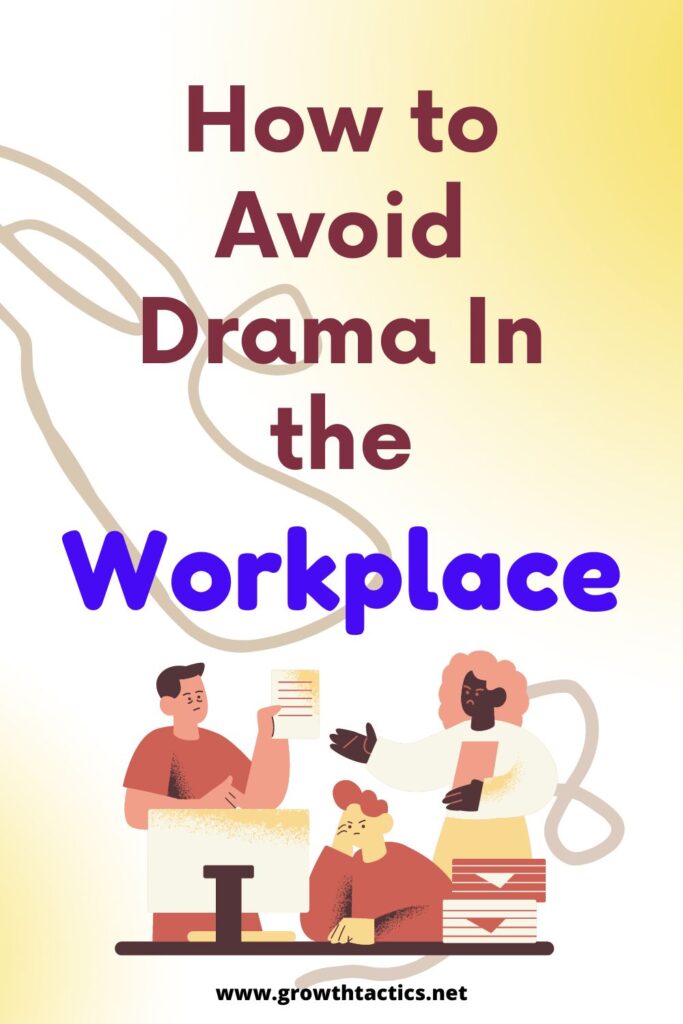Drama at work can turn your daily grind into a never-ending soap opera. But imagine a workplace where peace reigns, and productivity soars.
Yes, it’s possible!
This guide will show you how to dodge the drama, squash the squabbles, and keep your cool. Say goodbye to office gossip and hello to a happier, healthier work life. Ready to change the game? Let’s get to it.
Jump To Section
Understanding Workplace Drama
Workplace drama is like a sneaky office bug. Before you know it, it spreads everywhere, making everyone uneasy. Ever seen small disagreements turn into office-wide battles? That’s workplace drama in action.
So why does it happen? Several reasons. Maybe deadlines are tight and stress is high. Or perhaps clear communication took a backseat.
Sometimes, it’s just a clash of personalities. And let’s not forget the big one – gossip. Gossip is like drama’s best friend. They go everywhere together.
Here’s the thing, though. Workplace drama doesn’t just stay at work. It follows you home.
It can impact your happiness and even your health. Plus, it’s a productivity killer. When the team’s busy choosing sides, who’s meeting deadlines?
But understand this, recognizing drama is the first step to hitting the mute button on it. Notice the signs. Is the team more into whispering than working? Do minor issues become major crises? That’s your cue. The sooner you spot these signs, the better you can avoid getting dragged into the drama vortex.
Remember, knowing is half the battle. Once you understand what you’re up against, you’re better equipped to steer clear of it. Stay tuned as we dive deeper into how to keep your workplace drama-free. Together, we’ll turn that drama-filled office into a peace powerhouse.
Recognizing Early Signs of Drama
Spotting drama early can save you a lot of headaches. Like catching a cold before it turns into the flu, recognizing drama early keeps the workplace healthy. Here’s how to spot those early warning signs:
- Whispers and Secrets: If you notice more whispering around the water cooler than usual, it’s a red flag. Secret conversations often mean gossip is brewing.
- Cliques Forming: Watch out when groups start to form within the team. Cliques can be ground zero for drama, leaving some feeling left out.
- Sudden Changes in Behavior: If someone who’s usually chatty becomes quiet, or a calm person seems stressed, ask yourself why. Changes in behavior can signal underlying issues.
- Eye Rolls and Sighs: These small signs of disrespect can grow into bigger conflicts. Keep an eye out for these non-verbal cues during meetings.
- Avoidance: When team members start avoiding each other or certain topics, it’s a sign that tension is building.
- Increase in Complaints: If you’re hearing more complaints, especially about minor issues, drama might be on the horizon.
- Meetings After Meetings: When the real talk happens only after the official meeting ends, it’s a sign that people aren’t speaking openly.
Recognizing these signs early can make all the difference. It’s like having a drama radar. When you see these signals, you’ll know it’s time to act. Stay tuned as we explore how to prevent drama from taking over your workplace. Together, we’ll keep your work environment peaceful and productive.

Strategies to Prevent Workplace Drama
Creating a positive and productive work environment requires proactive measures to prevent drama before it starts. Here are expanded strategies that any team or organization can implement:
Promote Open Communication
Foster a culture where openness is valued. Use regular team meetings as a platform for employees to discuss projects, concerns, and any difficulties they’re facing. Encourage transparency and real talk. An open environment reduces misunderstandings and builds trust among team members.
Set Clear Expectations
Clearly outline job roles, tasks, and expectations for each team member. This clarity eliminates confusion and prevents the kind of misunderstandings that can lead to drama. Regularly review these roles and expectations to ensure everyone is on the same page.
Build a Team Spirit
Organize activities and events that strengthen bonds between coworkers. Team lunches, outdoor activities, or simple games can do wonders for team cohesion. A team that feels like a family is less likely to engage in negative behaviors.
Tackle Conflicts Head-On
Address conflicts immediately and impartially. Encourage a culture where people feel comfortable raising issues without fear of retaliation. Use mediation techniques to resolve conflicts, ensuring that both parties are heard and a fair resolution is found.
Lead by Example
Leaders and managers should embody the positive behaviors they want to see in their teams. Show respect, practice active listening, and maintain a positive attitude. Your actions set the tone for the entire workplace culture.
Create a No-Gossip Policy

Implement a strict policy against gossip and backbiting. Gossip can quickly poison a work environment. Encourage team members to communicate directly with each other to resolve issues, rather than talking behind each other’s backs.
Offer Support and Resources
Stress and personal issues can fuel workplace drama. Provide access to employee assistance programs, counseling services, and stress management resources. When team members feel supported in their personal lives, they’re less likely to bring drama into the workplace.
Celebrate Successes
Take time to recognize achievements and milestones, both big and small. Celebrating successes boosts morale and fosters a sense of accomplishment. A positive atmosphere makes it difficult for negativity and drama to take hold.
By following these strategies, managers and leaders can create a workplace that not only minimizes drama but also promotes a culture of respect, collaboration, and productivity. It’s about building a work environment where everyone feels valued, heard, and motivated to contribute their best.
The Role of Management in Avoiding Drama
As a manager, you’re not just in charge of tasks; you’re a key player in creating a drama-free environment. Think of yourself as the coach of a team. Your leadership is crucial.
Set the Right Example
You’re the role model. What you do, your team will follow. Show respect, be honest, and stay calm. Your behavior tells your team how to act.
Communicate Clearly
Talk to your team. Tell them what you expect and give feedback. Simple and open communication stops confusion and prevents drama.
Listen Actively
Listen to your team. Really hear what they’re saying. When your team knows you’re listening, they trust you more. Trust cuts down on drama.
Resolve Issues Quickly
When problems pop up, don’t wait. Deal with them right away. Quick action shows you’re in control and that you take your team’s concerns seriously.
Support Your Team
Help your team when they need it. Offer tools, training, and a listening ear. When they feel supported, they’re happier—and a happy team means less drama.
Remember, as a manager, you’re the key to a peaceful workplace. Keep things simple, direct, and positive. Talk to your team, listen to them, and jump into action when needed. You can keep drama at bay and make your workplace a happy and productive one.
Conflict Resolution Techniques for a Harmonious Workplace
Conflicts happen, but they don’t have to ruin your day. Use these simple techniques to smooth things out and keep your office running smoothly.
Stay Calm and Listen
First, breathe. Stay calm. Listen to what the other person has to say. Listening can solve half your problem.
Talk Face to Face
Emails can cause misunderstandings. Talk in person instead. It’s clearer and more personal.
Find Common Ground
Look for something you both agree on. It’s a good starting point for resolving bigger issues.
Be Fair and Unbiased
Treat everyone equally. Don’t take sides. Being fair keeps the peace.
Focus on the Problem, Not the Person

Talk about the issue, not who’s to blame. When you attack people, they get defensive. Focus on solving the problem together.
Agree to Disagree
Sometimes, you won’t see eye to eye—and that’s okay. Agreeing to disagree can end a conflict without hard feelings.
Follow-Up
After a solution is found, check back in. Make sure the fix is working and everyone is okay.
These steps are simple but effective. Use them to handle conflicts in your workplace. You’ll see better teamwork and a happier environment. Remember, the key is to communicate, stay objective, and aim for a win-win. You’ve got this!
Building a Positive Workplace Culture: Simple Steps to Follow
Want a workplace where everyone is happy and motivated? It’s possible. Follow these steps to build a positive culture at your job.
Be a Good Example
Start with you. Be positive and respectful. Others will follow your lead.
Celebrate Together
When someone does well, celebrate. A simple “well done” can mean a lot. It shows you notice and care.
Communicate Openly
Talk and listen to each other. Share what’s going on. When everyone is in the loop, trust grows.
Encourage Teamwork
Team projects can bring people together. Work on tasks as a group. It’s a great way to bond.
Offer Support
Help your teammates. If someone is struggling, offer a hand. It shows you’re a team.
Give Feedback
Feedback helps us grow. Offer it kindly. It should help, not hurt.
Create a Fun Space
Make your workplace fun. A happy work environment makes people want to come to work.
Building a positive workplace doesn’t have to be hard. Be kind, support each other, and communicate. These simple steps can make a big difference. Let’s make our workplace a better place together.
Ready to Transform Your Workplace?
Now you’ve got the tools to make a real change. Start today. Use the strategies we talked about. Communicate openly, resolve conflicts wisely, and build a supportive team culture. Every step you take makes a difference.
Why wait? A happier, drama-free workplace is within your reach. Implement these ideas and watch your work environment transform. You can do it! Let’s make your workplace a positive space for everyone!


